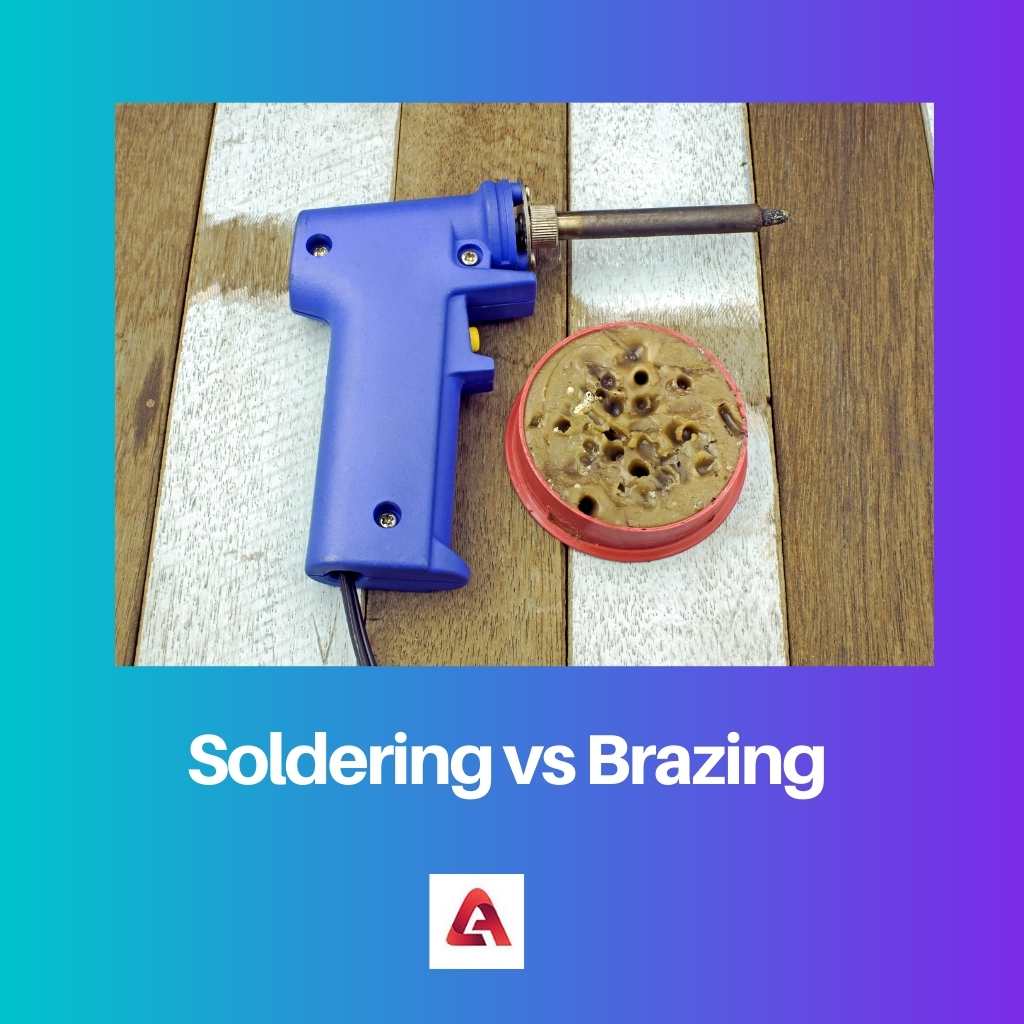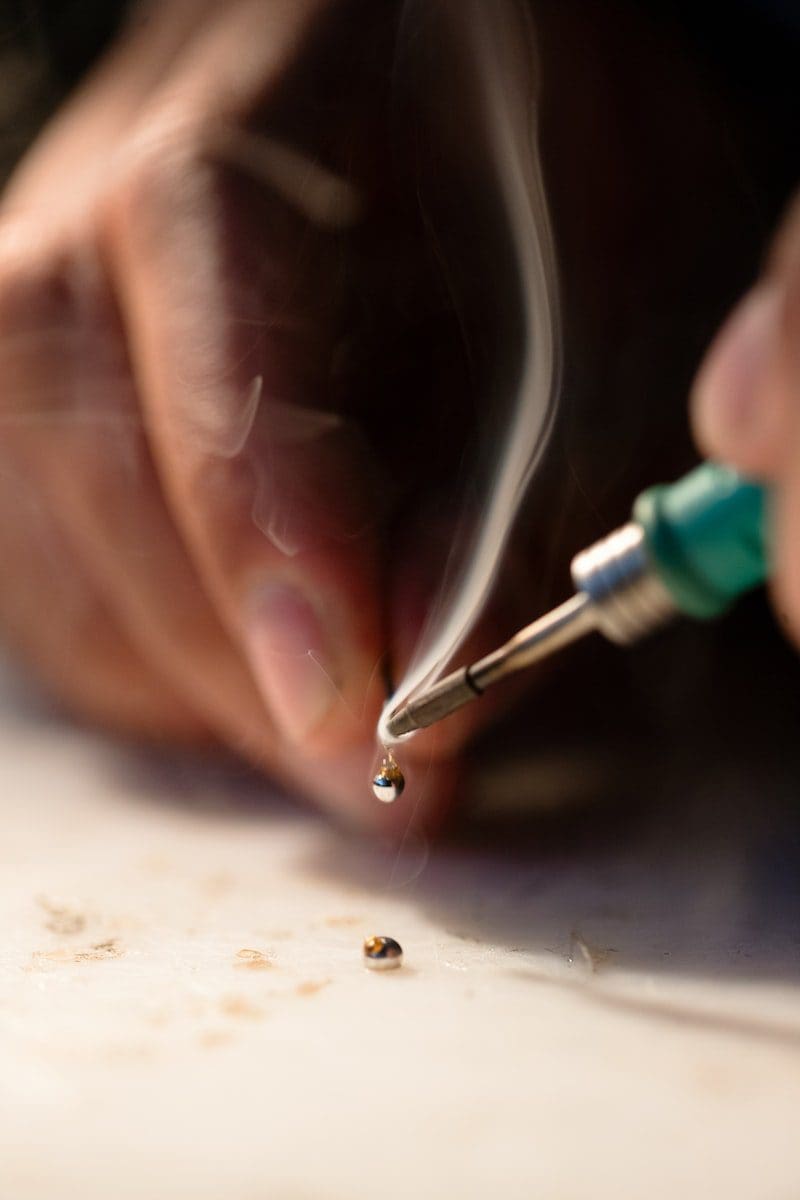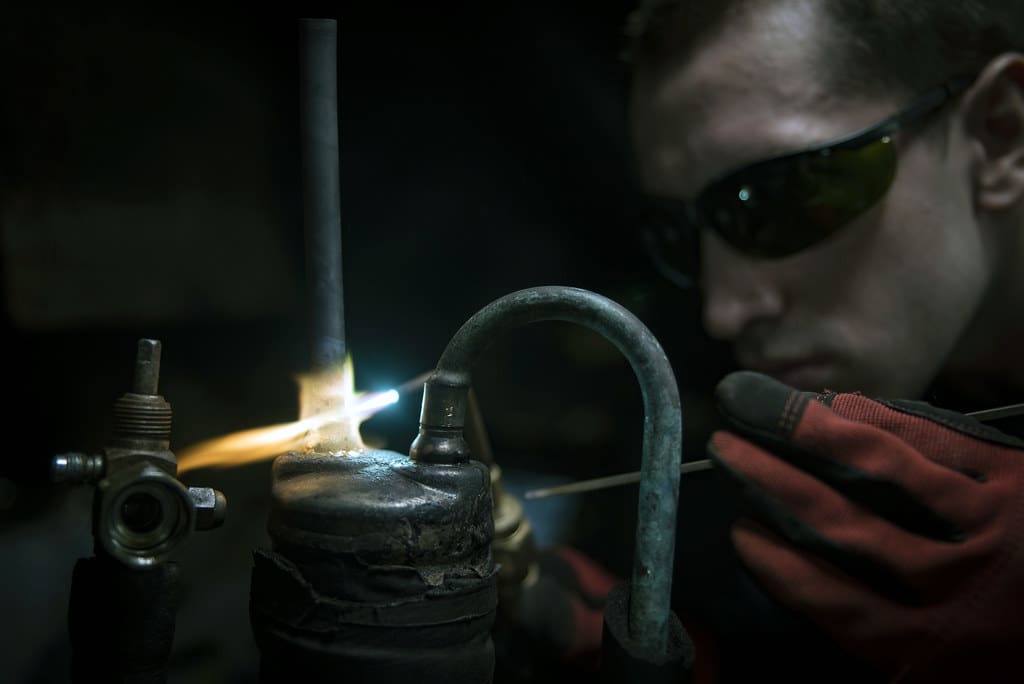A welder’s primary job is to join parts with the help of tools generating intense heat. This might seem a simple concept on the surface, but it is full of different ways and techniques.
A welder will braze, weld, or solder the two materials to join parts together.
All of the above-mentioned processes utilize heat. Soldering, brazing, and welding are each suited for different metals kinds and applications and comprise distinctive equipment, gear, and skills.
In this article, the chief aim is on differentiating soldering and brazing.
Key Takeaways
- Soldering involves joining metals using a filler material with a melting point below 840°F (450°C), while brazing uses a filler with a melting point above 840°F (450°C).
- Soldering produces weaker joints than brazing but is suitable for delicate components and electrical connections.
- Brazing creates stronger, more durable joints and is preferred for load-bearing applications and joining dissimilar metals.
Soldering vs Brazing

The process of soldering aids in joining metals by melting a filler metal into a joint for creating strong permanent bonds. It might not have or have capillary attraction.
Soldering and brazing differ in their melting temperatures. Soldering uses a lower temperature and is used for thinner materials, while brazing requires a higher temperature and is used for thicker materials. Brazing also uses a filler material with a higher melting point than soldering.
It allows for distinctive metals to be soldered, comprising brass, copper, and gold. To improve and strengthen mechanical properties fluxes are used.
Brazing uses much more closely fitted parts and higher temperatures in comparison to soldering. With the help of capillary action, the filler metal flows into the gap left between the close-fitting piece.
A major advantage is the ability to join the different or same metals with considerable strength.
Comparison Table
| Parameters of Comparison | Soldering | Brazing |
|---|---|---|
| Process temperature | Around 400° Celsius | 450° Celsius |
| Filler metal | 60:40 tin: lead alloy | Brass alloys |
| Joints | Weaker than brazing joints | Forms stronger joints |
| Base metal preheating | Not required | Most required |
| Corrosion resistance | Do not resist to some extent | Do resist corrosion |
What is Soldering?
The origin of employing evidence of soldering is traced back to 5,000 years ago especially in Mesopotamia. Historically, soldering was used for cooking and cookware tools, jewelry, assembly stained glass, and other uses.
Unlike welding, this process does not comprise the work piece’s melting.
Nearly all soldiers included lead in the past, but health and environmental concerns have increasingly dictated lead-free alloys to use for plumbing and electronics purposes.
The substrate’s solderability is a measure with which a soldered joint can be manufactured to that material.
Some metals like gold, copper, and silver are easier to solder in comparison to others. Mild, nickel, steel, and iron are next in difficulty.
Due to their thin stainless steel, some aluminum alloys and strong oxide films are even more difficult to solder.
Distinctive types of soldering tools are manufactured for particular applications. The needed heat can be caused by electrically heating operated elements or from burning fuel.
When it comes to hand soldering, an electric soldering iron is used.

What is Brazing?
Brazing requires small joint spacing for allowing capillary action to draw the metal of filler. Mainly into the joint when the parts reach the proper phase temperature.
Flux in brazing helps to remove any formation of oxide as a result of the part’s heating.
Brazing might entail exposure to fumes of hazardous chemicals. In the United States, the NIOSH recommends that exposure to these fumes is mainly controlled to levels below the exposure limit allowed.
For accomplishing brazing operations, there are several heating methods.
Some of the most common brazing heating methods comprise braze welding, torch brazing, furnace brazing, dip brazing, induction brazing, infrared brazing, resistance brazing, blanket brazing, electronic laser, and beam brazing.
These methods are categorized through diffuse and localized heating techniques.
Some phrases come in the trefoil’s form, laminated foils of a carrier clad’s metal along with Braze’s layer at each side. Copper is the center metal: for the alloy.
The chief role is to act as a carrier to absorb mechanical stresses. Several distinct groups are formed by brazing alloys; the alloys present in the same groups possess similar uses and properties.
These comprise Ag-Cu, Cu-Zn, pure metals, Ni, Co, and many more.

Main Differences Between Soldering and Brazing
- Soldering is only possible in exact sheet metals and thin metals. On the other hand, brazing is suitable in dissimilar or similar types of metals and thicker metal parts.
- The advantages of soldering are minimum thermal distortion, lower power input, and post-processing heat treatment not required. On the contrary, lower processing temperature, joining dissimilar base material, producing stronger joint, and minimal residual stresses in the joint are some of the brazing’s advantages.
- When it comes to disadvantages, fluxes might contain toxic components and produce joints unsuitable for high-temperature applications. In contrast, the drawback of brazing is failing to join large sections and the production of lower strength joints.
- In terms of fitting strength, soldiering is a softer process for metal joining where the metal’s part is not held tightly. On the flip side, the brazing generates a tight fit among the joined metal parts.
- Mostly in the electronic industry to form electronic components connections, the soldering process comes into role. It is used in engine repairs, art, and crafts, plumbing works, metal works from flashing to jewelry. Meanwhile, brazing is used in industries of automotive. It also joins a range of elements except for magnesium and aluminum.

References
- https://books.google.com/books?hl=en&lr=&id=cQ6khQScBF4C&oi=fnd&pg=PR7&dq=soldering&ots=TGk77JoKze&sig=ixkKpE0bCahiR2I2ly_uXSCGKN4
- https://books.google.com/books?hl=en&lr=&id=XSGaKuYQLjIC&oi=fnd&pg=PR6&dq=brazing&ots=9dnirSWrIP&sig=1d2i808AJIxmtoERU3Atapfcbf4
